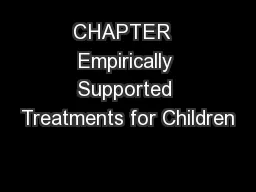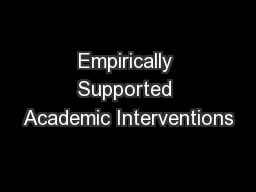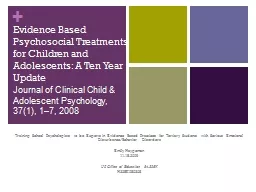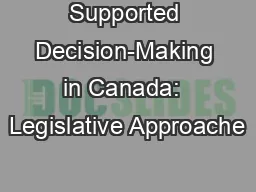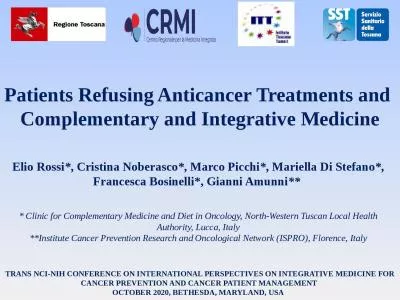PDF-CHAPTER Empirically Supported Treatments for Children
Author : myesha-ticknor | Published Date : 2015-06-08
Ollendick Virginia Polytechnic Institute and State University USA and Neville J King Monash University Australia INTRODUCTION About 50 years ago Eysenck 1952 published
Presentation Embed Code
Download Presentation
Download Presentation The PPT/PDF document "CHAPTER Empirically Supported Treatment..." is the property of its rightful owner. Permission is granted to download and print the materials on this website for personal, non-commercial use only, and to display it on your personal computer provided you do not modify the materials and that you retain all copyright notices contained in the materials. By downloading content from our website, you accept the terms of this agreement.
CHAPTER Empirically Supported Treatments for Children: Transcript
Download Rules Of Document
"CHAPTER Empirically Supported Treatments for Children"The content belongs to its owner. You may download and print it for personal use, without modification, and keep all copyright notices. By downloading, you agree to these terms.
Related Documents

